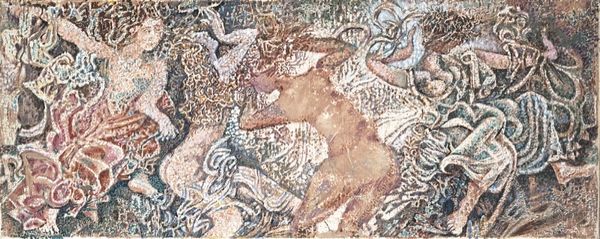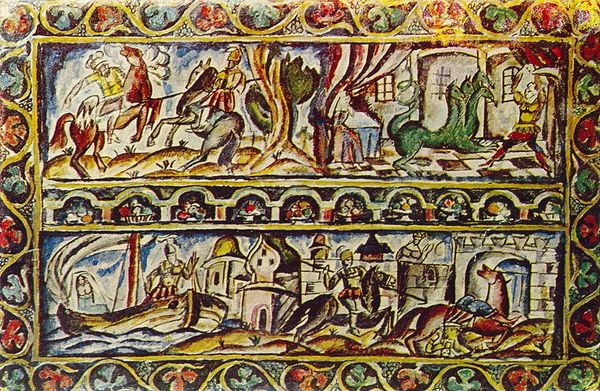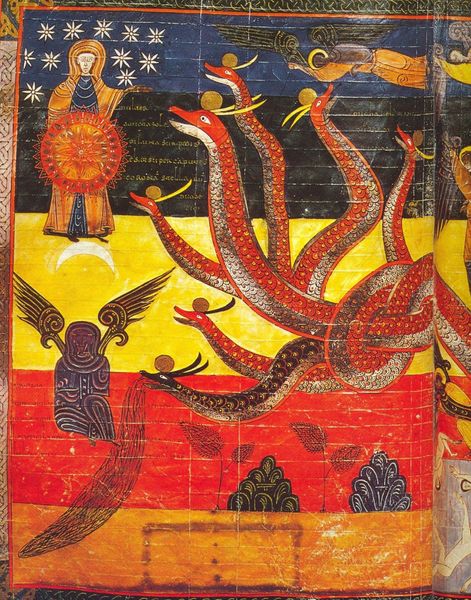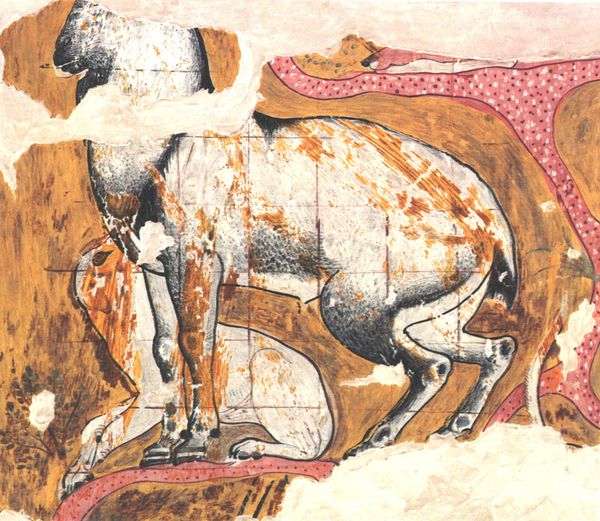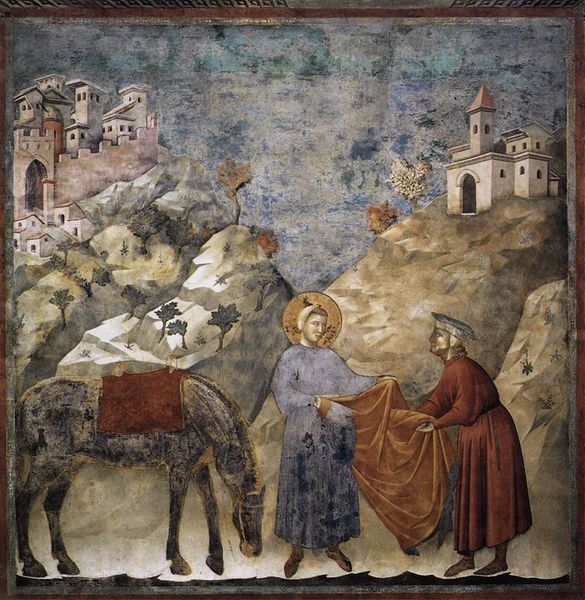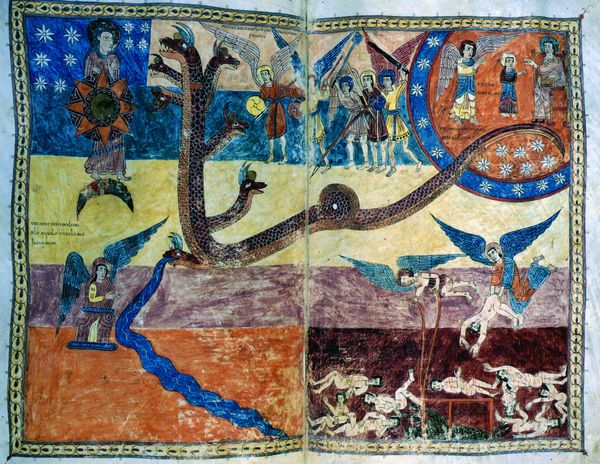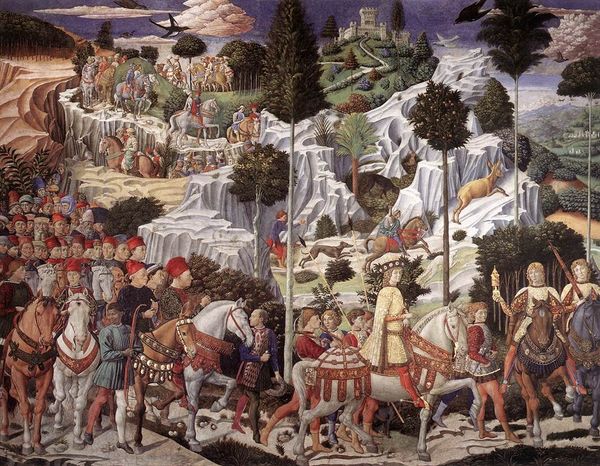
painting, mural
#
narrative-art
#
painting
#
landscape
#
figuration
#
horse
#
mythology
#
islamic-art
#
genre-painting
#
history-painting
#
mural
#
miniature
Copyright: Public domain
Ahmad Musa painted Rustam killing Istendiyar sometime in the 1300s, using vivid pigments to depict this dramatic scene. The artist would have likely prepared his own colors, grinding minerals and plants to achieve the vibrant blues, reds, and greens we see here. These pigments, carefully applied, create a tapestry-like effect, especially in the densely patterned ground. The painting's surface is relatively flat, characteristic of the manuscript tradition, where detail and narrative clarity were paramount. The focus is on storytelling, rather than illusionistic depth. The labor involved in such a work was significant. From preparing the parchment to mixing the paints and meticulously applying each brushstroke, the creation of this image demanded immense patience and skill. Consider how the artist, likely working within a workshop, contributed to a larger cultural project: the illustration and dissemination of epic tales. Ultimately, the enduring power of this painting resides not only in its narrative but also in its materiality—a testament to the enduring value of skilled handcraft.
Comments
No comments
Be the first to comment and join the conversation on the ultimate creative platform.
